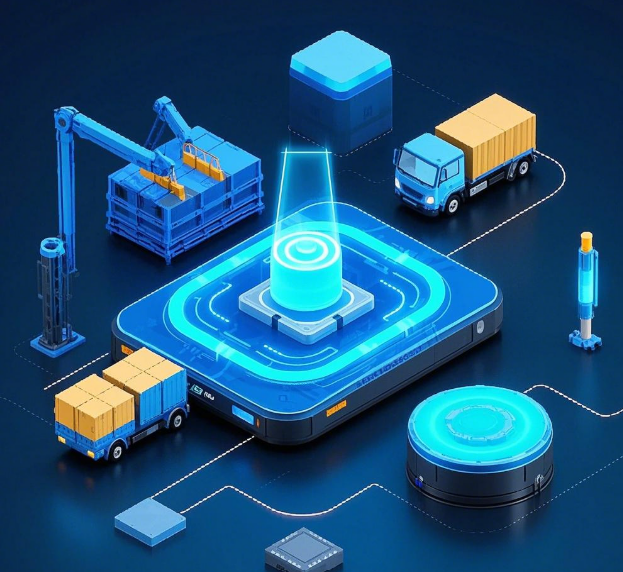The report points out that embodied intelligence, which combines the "intelligence" of simulating the human brain with the diverse "forms" of robots, has shown broad application prospects in many fields and is regarded as an important step towards general artificial intelligence. Different from traditional robots that rely on AI vision and scenario-specific pre-training, embodied intelligence is mainly reflected in three aspects: first, it does not need to rely on preset complex logic to manage scenarios; secondly, it has a learning and evolution mechanism, which can continuously achieve environmental adaptation through interactive feedback. Finally, it can generate new data based on its interactions with the environment, driving higher levels of intelligence. Although the current technological progress has initially possessed these three characteristics, there has not yet been a fully functional commercial product. However, as technology continues to evolve, embodied intelligence will bring about capabilities in four areas, including adaptability to dynamic changes in the environment, generalization of multitasking, interaction closer to humans, and more efficient task execution. These breakthroughs will further enhance its application value and open up a broad market space.
Prospects for the application of embodied intelligence in various fields
Industrial manufacturing: Break the bottleneck of human-machine collaboration and achieve intelligent and flexible adaptation
According to the report, embodied intelligence in the field of industrial manufacturing is expected to become the key core and effective grasp of new industrialization. Embodied intelligence will promote the transformation of robots from "able to act" to "capable of tasks", thereby providing strong support for the intelligent upgrading of industrial manufacturing. Relying on carriers such as robots and robotic arms, the application of embodied intelligence will make industrial manufacturing processes smarter, more efficient, and more flexible. In factories such as automobile manufacturing, embodied intelligent robots can accurately complete parts assembly, welding and other work, improve production accuracy, reduce labor costs and production cycles. In hazardous work environments such as spraying, humanoid robots have the potential to replace manual work due to their increased flexibility.
In addition, embodied intelligent industrial robots will gradually replace humans and become the most flexible execution unit on industrial production lines. Through intelligent flexible manufacturing, industrial robots can perceive the surrounding environment in real time, autonomously adjust decisions and optimize actions during task execution, thereby reducing the dependence on human intervention. This production model is not only highly adaptable, but also improves production efficiency and manufacturing accuracy. For example, Tesla's Optimus humanoid robot helps improve battery production efficiency and reduce the impact of human factors on product quality when operating in battery factories.

Fig: prospects for the application of embodied intelligence in various fields
Autonomous driving: Adapt to the open traffic environment and achieve safe, reliable and intelligent driving
In the field of autonomous driving, embodied intelligence is expected to achieve a safer and more reliable driving experience by enhancing its adaptability to open road environments. Autonomous vehicles not only need to accurately perceive their surroundings, but also make rational decisions quickly based on the information they have obtained, and rely on the actuation system to complete the vehicle control. Embodied intelligence can efficiently integrate these links to form a closed loop of collaborative operation. For example, Tesla's Autopilot system uses on-board cameras and sensors to collect data for functions such as adaptive cruise control, lane keeping, and automatic lane change, greatly improving the safety and convenience of driving. For example, Google's Waymo's autonomous driving technology integrates multiple modules such as environmental perception, precise positioning, path planning, and vehicle control, which can identify key targets such as pedestrians, vehicles, and traffic lights in real time, predict potential risks, and take avoidance measures in advance, thereby improving overall driving safety.
Specifically, embodied intelligence comprehensively optimizes the overall performance of autonomous driving systems by integrating key capabilities such as perception, decision-making, and execution. First of all, it can achieve accurate perception of complex dynamic environments and has a high degree of generalization ability. Secondly, it can support efficient intelligent decision-making and precise action control, make full use of the advantages of various sensors on the vehicle, and comprehensively analyze multi-modal data, so as to formulate reasonable driving strategies and implement controllable operations. Finally, it has a high degree of autonomous learning and adaptability, which enables the system to continuously optimize driving behavior and improve its ability to respond to different traffic scenarios.
Related:
Analysis Development of Embodied Intelligence (1)
Analysis Development of Embodied Intelligence (2)
Analysis Development of Embodied Intelligence (3)
Analysis Development of Embodied Intelligence (4)
Analysis Development of Embodied Intelligence (5)
Analysis Development of Embodied Intelligence (6)






